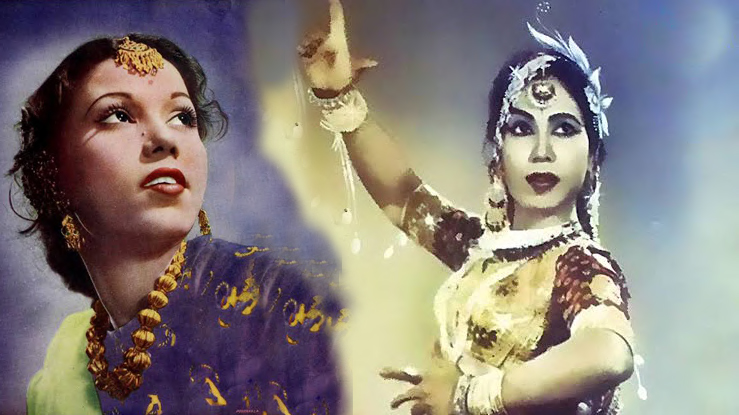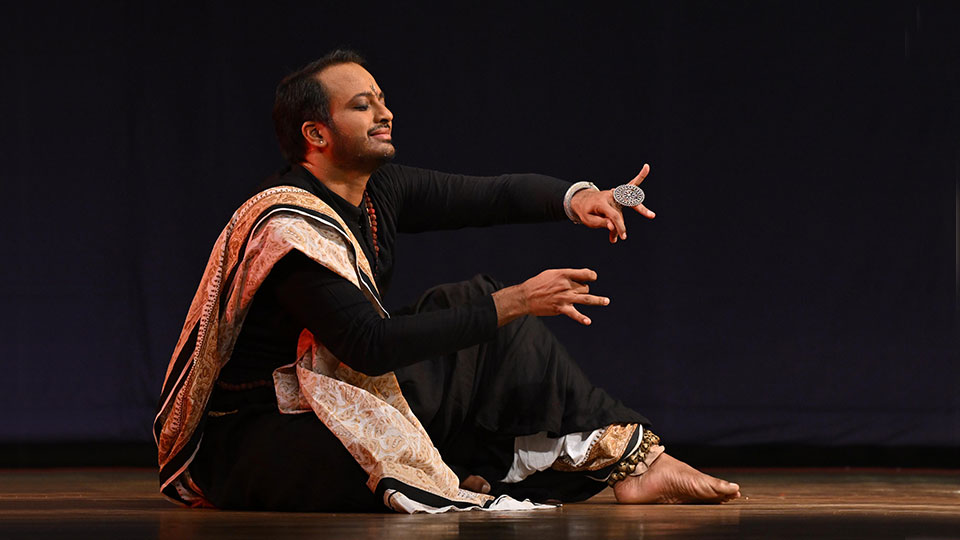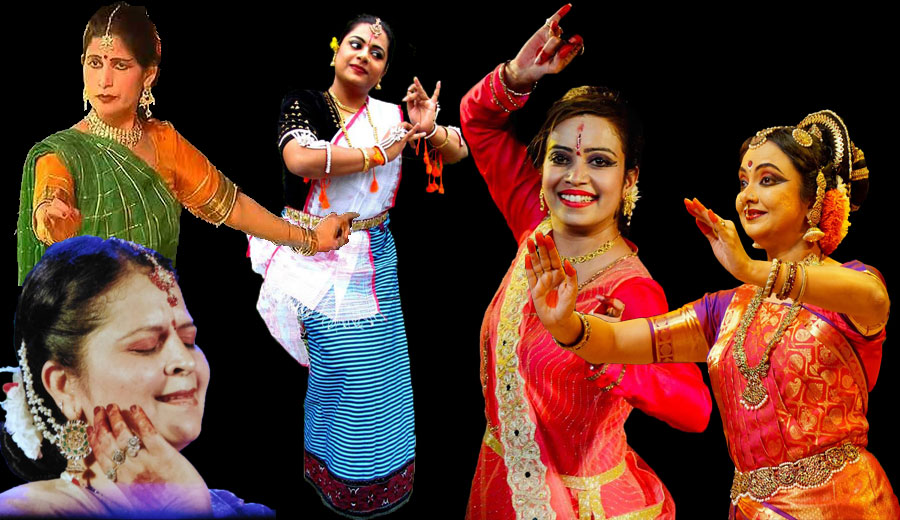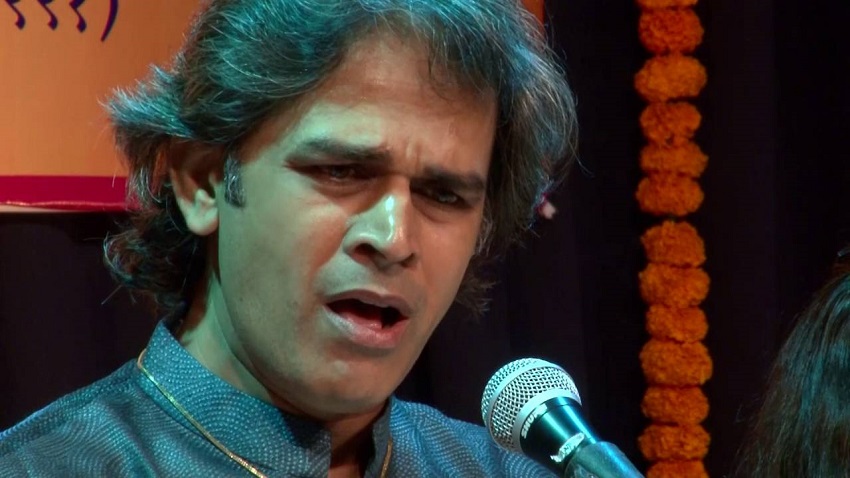Gurudev Rabindranath Tagore had bestowed upon Sitara Devi the title Kathak Queen.
Born on Dhanteras, two days before Diwali on 8th November 1920, in Kolkata, Sitara Devi was named by her Brahmin father Sukhdev Maharaj of Varanasi, as Dhanalakshmi, Dhanno. Of the three daughters, the other two being Alaknanda and Tara, Sitara was the youngest. At the age of eight, she took to dancing, imitating her elder sister Tara and danced in a school event. Her father saw the talent and seeing the star quality named her Sitara. He was married to Matsyakumari, a performing artist in Nepal, where he was a pundit in the Royal Durbar of Nepal.
He returned to Varanasi and studied Kathak under Achhan Maharaj, father of Birju Maharaj. He wanted training in Gharanedar biradari. The Brahmin community ostracized him for taking to dance and also teaching dance to his three daughters and two sons Chaube and Pande. He dared the Brahmin community and dressed his daughters as Krishna, Radha and Gopis, giving it devotional and religious orientation. People loved the girls dancing roles of Krishna and Radha. Sukhdev Maharaj introduced parans of Kali and Shiva and brought in reform in Kathak, which was earlier taught to prostitutes and was known as ‘Nautch’.

When Sitara was eleven, Sukhdev Maharaj had moved to Mumbai for some time. Sitara performed before Tagore, and Sarojini Naidu, winning their praise and the title Kathak Queen. She got an opportunity to appear in a movie Sita Haran in 1932 and in later years also acted in films like Watan, Roti, Phool. By temperament, Sitara was what we say ‘Bindas’, ‘Devil may care’ and completely uninhibited.
It was in 1953 when Brijnarain ji started organizing festivals of dance and music under the banner of Sur Singar Samsad, in Mumbai that I came to know Sitara closely. She regularly performed in Swami Haridas Sammelans. Not a single annual festival was complete without her performance. She had a large public following. She had a unique and endearing way of addressing the audience. Kathak is one dance form where a dancer can indulge in talking with the audience while drawing attention to the intricacies of the item a dancer performs.
Sitara’s dance was energetic. Nazakat, delicacy and Khubsoorati, beauty for which Lucknow gharana is known was not the hallmark of her powerful dance. She recited the mnemonic syllables, bols with great command and even challenged the accompanists on percussion to reproduce the bols and enter into jugalbandhi, repartees. She was often what we would call a riot on the stage, but what she presented was within the bounds of Kathak. She would improvise and even create a paran taking a cue from the gun shooting and perform using the bols like releasing the bullets! She was a law unto herself.
But when she would perform Thumak Chalat Ramachandra, she would epitomize mother Kaushalya and her rendering would touch the hearts of the audience. Sitara was lucky as the great Allaralkha Saab, Samta Prasadji (Gudai Maharaj), and Kishan Maharaj accompanied her in her long career. She studied under Achhan Maharaj and also Lacchu Maharaj. For some time she had studied Bharatanatyam under Guru Kalyansundaram and would say she would combine Kathak and Bharatanatyam and call it Kathaknatyam.
When Brijanarianji asked me to conduct Kal-ke-Kalakar festival at C.J. Hall in 1970, Sitara supported us to encourage young dancers. Lachhu Maharaj’s one young disciple from Lucknow Kapila Raj was to perform on one evening. Earlier one local dancer performed well and Sitara declared that she would give her Gold Medal. When Lachhu Maharaj saw that he was a little upset.He said that he was only a guru and he can only give blessings. Listening to this Sitara realized her mistake, went on the stage and touched feet of Lacchu Maharaj and asked him to bless her. It was the most touching sight we all saw. Sitara’s respect for her Guru was boundless.
Gopi Krishna, the well known Kathak dancer who appeared in film Jhanak Jhanak Payal Baje, was the son of Sitara’s elder sister Tara. He announced that he will dance for eight hours nonstop to create a record. He did perform for eight hours. Sitara took up the challenge and announced that she would dance for eleven hours at Birla Matushri Sabhagar and danced outsmarting her own nephew!
Once Mr. Jamshed Bhabha asked me to arrange Sitara’s private performance at the Taj for a group of industrialists. Sitara agreed but asked Mr. Bhabha that she would like to get new costumes. Mr. Bhabha agreed. She took me to Bhuleshwar, where Maganlal Dresswalla’s big shop was. They used to supply costumes to film producers and knew Sitara well. The owner welcomed her and the word spread that Sitara had come. A sizeable crowd gathered. Sitara was pleased and said to the owner that a photographer should be asked to take her photo with her admirers. And the photograph was taken.
[adrotate group=”9″]
Selecting the dress, she selected a ‘see-through’ pink coloured ghaghara, skirt and blue coloured odhani. Seeing my discomfiture she laughed and pulling my ears said: “Are buddhu, when I dance I have to show some sex also” meaning she should look sexy! And it did not bother her nor the group of industrialists! She won hands down. She charmed them away by her talk and exuberant dance.
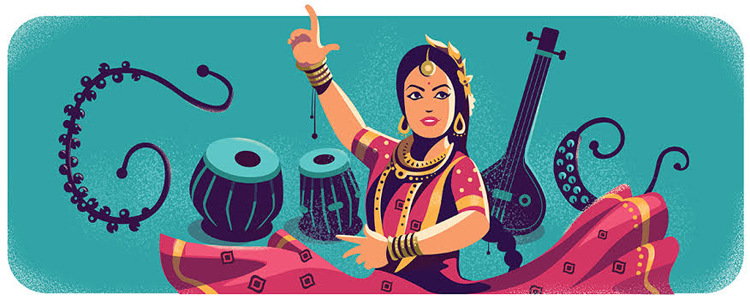
Once again the same thing happened. Beate Gordon of The Asia Society of New York came to audition her. She and I went to meet Sitara. Sitara with her enthusiasm and smart talk won her over. Then the question of selecting costumes for Carnegie Hall, New York performance came up. Sitara showed her costumes full of sequins and stars and it was quite jazzy. Beate and I expressed anxiety, but Sitara would not budge an inch and insisted on putting on that costume only.
Believe me, she was indeed a riot with sequins and dazzling costume which we thought Carnegie audience would mistake for a night club singer. No way, they loved it. Sitara spoke in her inimitable style and the audience cheered her up. She gave Beate and me a winning glance in the greenroom and said: “You see, I know my audience!”
Film Director Hrishikesh Mukherjee and actor David were great admirers of Sitara When she was to appear at C.J Hall, they would request Brijnarainji to reserve first row seats for them. Seeing them in the audience, Sitara would welcome and show respect for their attending her show. She would select the best of the parans, todes, tukdes and thumri for them. She had a cross-section of admirers.
Sitara had married three times. Her first two marriages with Nazir Ahmad Khan and K. Asif the film director were not happy and resulted in divorce. She married third time Pratap Barot, whose sister Kamal Barot was a singer. She had a son Ranjit Barot by that marriage and for some time she went with Pratap Barot to London. She performed at Royal Albert Hall and received critical appreciation for her Kathak dance. But after a year she returned to Mumbai as she missed her audience of Mumbai and of other cities.
[adrotate group=”9″]
She was anxious to start an academy of dance to propagate her father Sukhdev Maharaj’s traditional and compositions. She adopted her brother Chaube’s daughter Jayantimala and trained her in typical Banaras Gharana style. She was very proud of Banaras Gharana and creations of Sukhdev Maharaj’s compositions. There used to be controversy about the naming of the gharana and she was vehement to call her gharana as Banaras Gharana.
Once in a small booklet, I wrote on Kathak, in which in order to avoid controversy, I did not mention about her version of Banaras Gharana. She sent me a legal notice for misrepresenting her gharana. I was of course quite puzzled at her sending me legal notice. She called me on phone and said: “Arre listen, I want everyone to know that I can send legal notice to any one, leave alone Sunil Kothari, dance critic. I do so to preserve my gharana. But listen I am fond of you. Let me tell you. I have not signed the notice. My lawyers say that if I do not sign the notice, it becomes invalid. I do not know valid or invalid, but notice must be sent to you!”
She was a wonderful artist. Affectionate, full of life, and loved dancing even at the advance age. She received Sangeet Natak Akademi award in1969, Padma Shri in 1973 but refused Padma Bhushan when someone junior to her was given in preference to her! Several honours were bestowed upon her.
[adrotate group=”9″]
When I moved to Kolkata and then to New Delhi, she would inform me about her visits. She was fond of Kathak dancer Geetanjali Lal and often used to come and stay with her at her residence in Asiad Village. She would regale us with interesting stories. About her childhood, how they were excommunicated by society, but how they struggled to establish Kathak as a dance-worthy of learning by higher class girls. Her love for dance was boundless. She would tell us that when she would die she would still be doing tatkar!
At an advanced age, she could not perform, but her zest for dance was infectious. She passed away on 25th November 2014 in Jaslok Hospital in Mumbai. She is survived by her son Ranjit Barot who is a great drummer and daughter Jayantimala who carries on her legacy. Vishal Krishna who is Sitara’s grand nephew follows Gopi Krishna’s style of Banaras Gharana.
Sangeet Natak Akademi has in their archive recordings of Sitara’s Kathak performances.
यह भी पढ़ें >> सितारों की सितारा “कथक क्वीन सितारा देवी”



